Media | Articles
How the Fiat X1/9 got (and kept) its name
Did you know that nearly 60 percent of Fiat’s X1/9 production was claimed by the U.S. market? Despite its popularity both in America and in its home country, Italy, few fully understand how (or why) this model name came to be. You can learn more about its genesis, history, and driving experience here. Our investigation today, in this article, is all about the X1/9 name itself. And if the nomenclature has always seemed a bit cryptic, well, that’s by design.
The name has its roots in Fiat’s project code convention—an internal numbering scheme that originated in 1946, when the company was establishing its postwar development strategy. Seeking to bring order to the ad hoc numbering of various models and designs, technical director Dante Giacosa determined that new vehicles would be identified by a three-digit number: 1 for cars, 2 for trucks, 3 for intercity buses, and 4 for urban buses. Later on, the number 5 was assigned to farm tractors and 6 to engines for special applications.
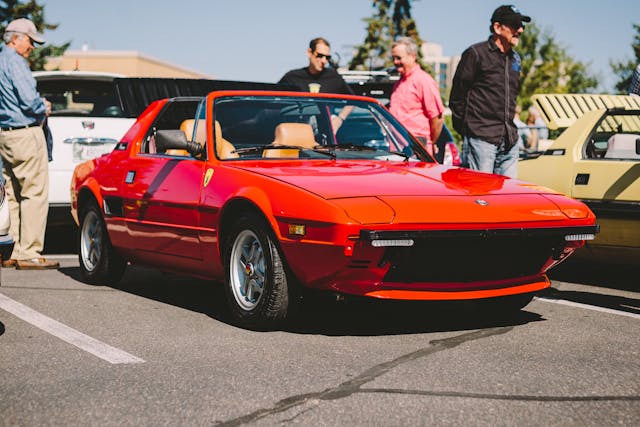
How exactly Fiat kept numerical track of its passenger car projects remained opaque to the outside world in the years that followed, but that changed with the arrival of the 124 family sedan. Launched in the spring of 1966 and elected European Car Of The Year for ’67, the Fiat 124 bore the very same commercial name as its original project code, inaugurating a practice the Italian company would follow for more than a decade, save for a few market-specific exceptions.
An unintended consequence of this continuity was that it telegraphed Fiat product development strategy. Once magazine journalists hunting for juicy new-product and test-prototype details got wind of one or more numbers in the product code, they could guess what Fiat was up to with relative ease, much to Giacosa’s annoyance. Fiat’s own marketing department suddenly had the same decoder tool. The division was often willing to step onto the technical department’s turf and influence product development, which must have been even more frustrating for Giacosa than journalists’ and onlookers’ unwanted attention.

So, in an attempt to confuse both camps, Giacosa resorted to the not-so-original idea of referring to future projects with the letter “X.” In his seminal autobiography from 1979, titled “I miei 40 anni di progettazione alla Fiat” (“My 40 years of design at Fiat”), Giacosa admits that inspiration for this approach came from Provslav Rakovic, the general manager of Yugoslavia’s Zàstava factory, home of Fiat models under license since 1954.
Rakovic used the letter “X” when discussing future models, and Giacosa began to call new engine projects “X0,” new car projects “X1,” and new trucks “X2.” The project “X1/1” eventually resulted in the Fiat 128—the marque’s influential front-wheel-drive family sedan launched in 1969. The Autobianchi A112 (project “X1/2”) debuted that same year along with the Fiat 130 flagship sedan (project “X1/3”), while the “X1/4” arrived in 1971 as the Fiat 127, the last project directly overseen by Giacosa before he reached the age of mandatory retirement.
Following Dante Giacosa’s departure (Fiat nonetheless retained his services as a consultant well into the 1980s), the use of “X” codes continued but became increasingly haphazard as the years went by. It’s worth pointing out that these “X” codes never entirely replaced the prior three-digit numbering system. Used early into a project’s run, the “X” code usually got replaced by a three-digit number as the vehicle moved closer to production.
Pinpointing precisely the moment in time when Fiat abandoned this practice for good may not even be possible. We Italians are much better at building things than keeping track of them, so I wasn’t surprised when Fiat’s historical archives couldn’t give a conclusive answer to my inquiry about “X” codes; a proper list of them doesn’t appear to exist and likely never did. However, period material suggests that production car projects were still issued “X” codes at least until the 1978 Ritmo hatchback (briefly sold in the U.S. as the Strada, without success), whose development began under the “X1/38” moniker before that was replaced by the “138” project number.
Marketplace
Buy and sell classics with confidence
Beyond that, material evidence suggests that “X” codes were, albeit intermittently, still employed years later for advanced prototypes designed by Fiat’s research branch, known as Centro Ricerche Fiat. The fantastic Stellantis Heritage Hub collection in Turin even includes an intriguing CRF prototype for a highly fuel-efficient small car from the 1980s identified as “X1/75,” which is the highest code I’m aware of.
Ultimately, the X1/9 remains the only Fiat model whose “X” project code became a commercial name. Perhaps that outcome shouldn’t be all that surprising; although it suited the model’s exotic mid-engine layout, angular style, and technical advancement, the name was also kind of a mouthful. Especially when pronounced in Italian. Alas, now, next time you spot an X1/9 at a cars and coffee, you’ll know it owes its peculiar name to an unwitting engineer from socialist Yugoslavia and the shrewdness of Italian motoring journalists.
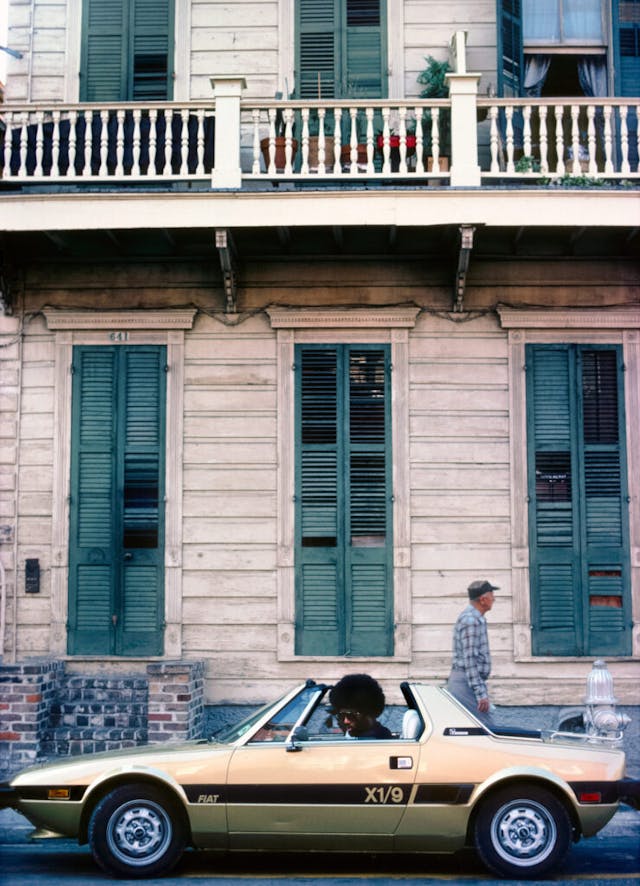
**
Matteo Licata received his degree in Transportation Design from Turin’s IED (Istituto Europeo di Design) in 2006. He worked as an automobile designer for about a decade, including a stint in the then-Fiat Group’s Turin design studio, during which his proposal for the interior of the 2010–20 Alfa Romeo Giulietta was selected for production. He next joined Changan’s European design studio in Turin and then EDAG in Barcelona, Spain. Licata currently teaches automobile design history to the Transportation Design bachelor students of IAAD (Istituto di Arte Applicata e Design) in Turin.
***
Check out the Hagerty Media homepage so you don’t miss a single story, or better yet, bookmark it. To get our best stories delivered right to your inbox, subscribe to our newsletters.
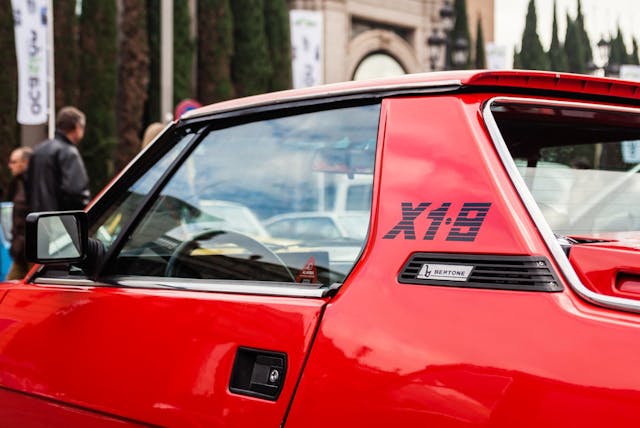
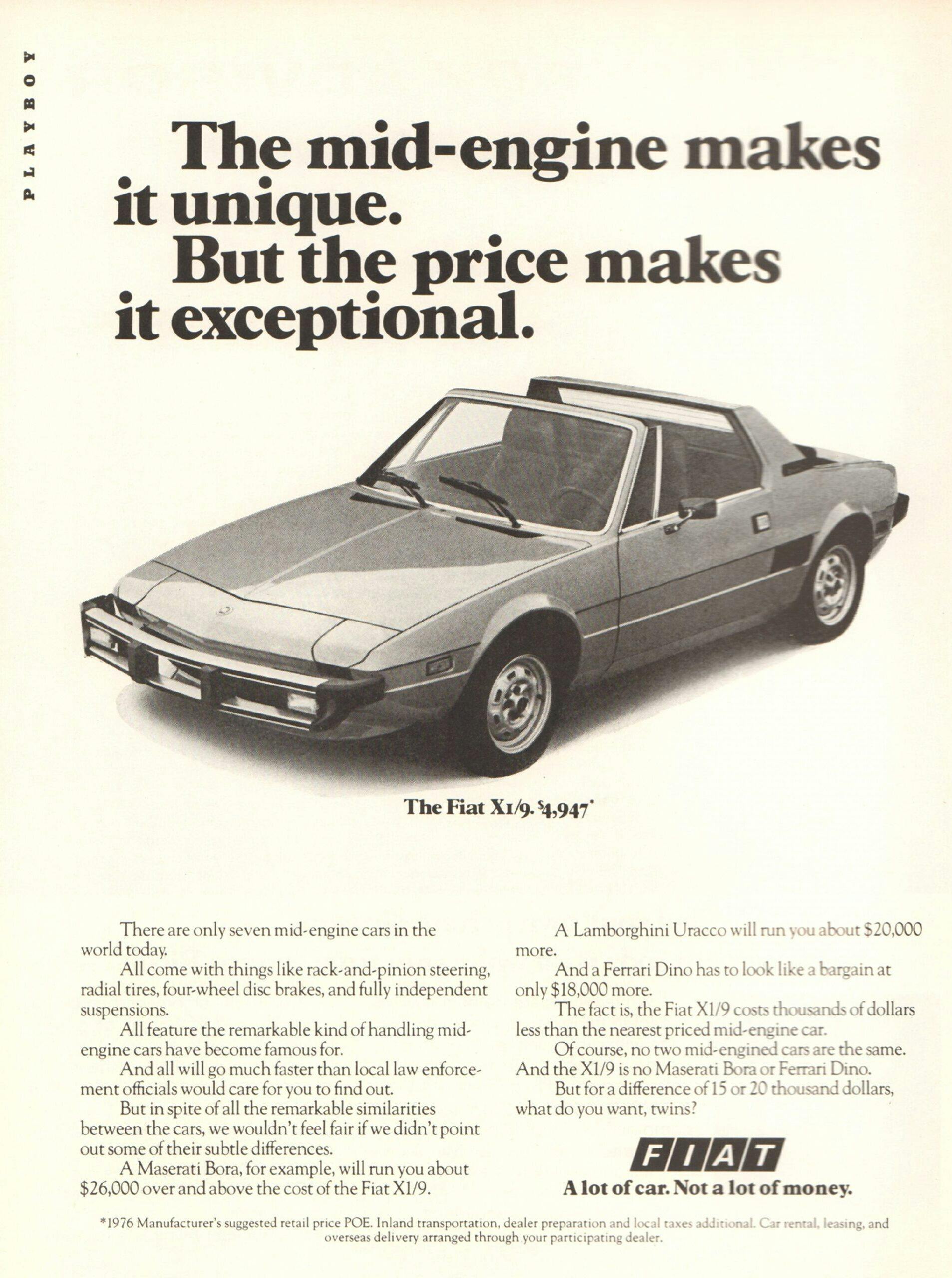
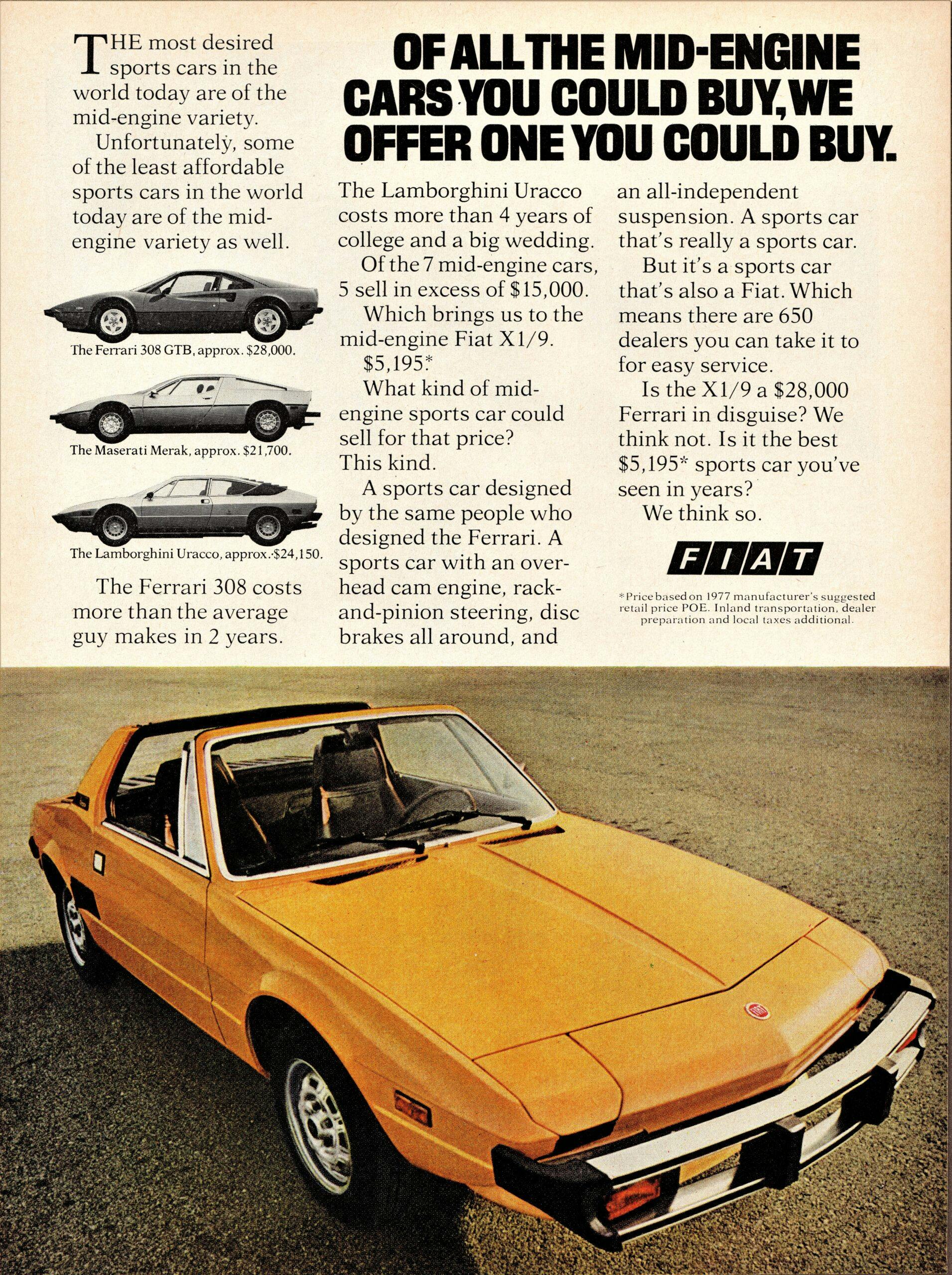
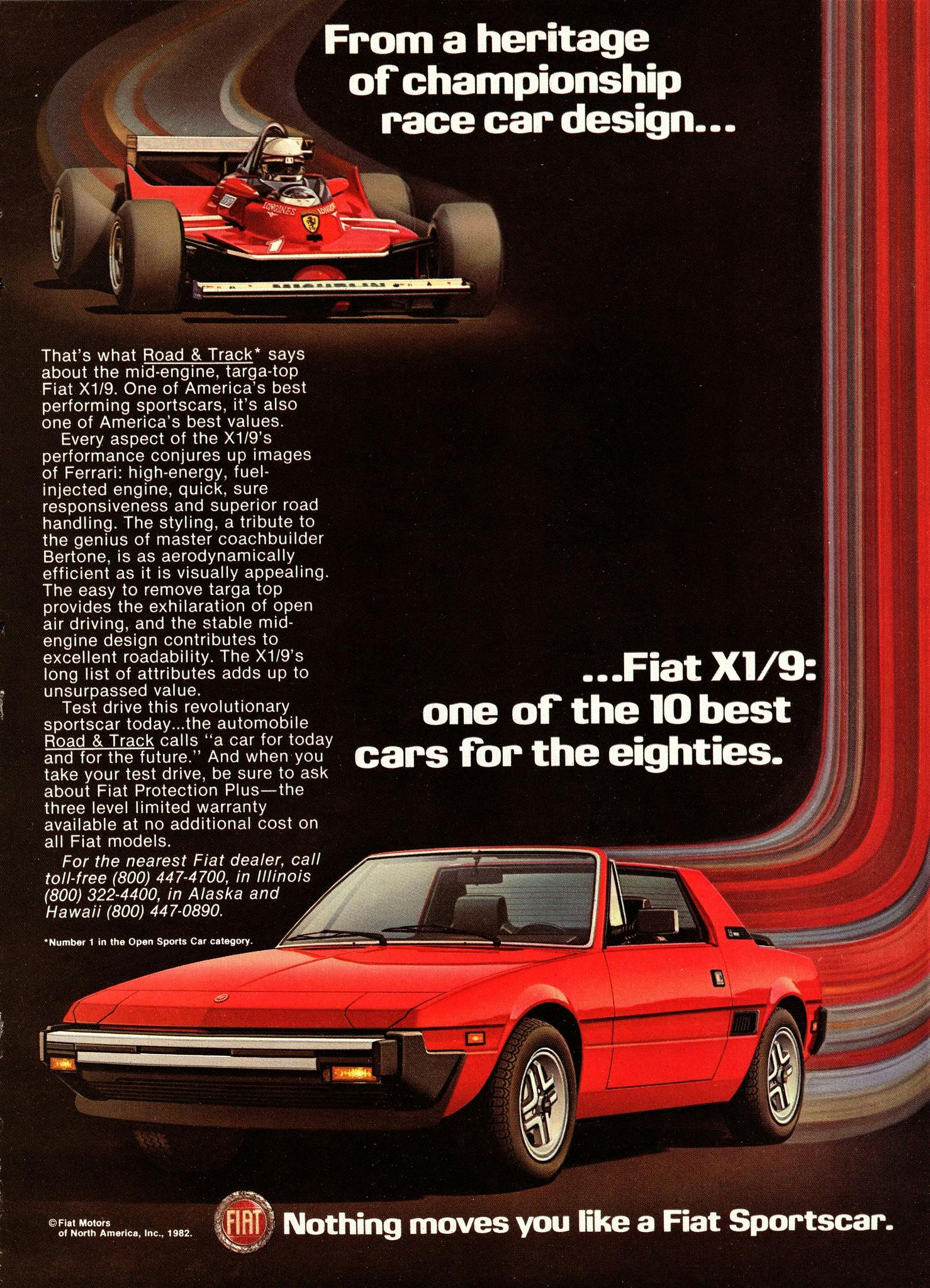


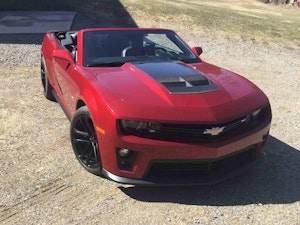













I had an X1/9 while stationed in Germany about 1983. The car was fun to look at, kinda fun to drive but was a pain to keep on the road because of mechanical issues. Didn’t keep it very long.
My dad bought one in it’s first year in Canada. I drove it and it was fun. Sadly the thing quit often as my mother drove to work, some kind of carb problem that Fiat could not over come. He ran a series of spoof very negative ads before Fiat finally bought it back. Apparently the problem was fixed the next year.
The model number makes it sound like a US Experimental aircraft prototype.
Fix It Again, Tony.
X for Experimental.
1 Designer.
9 Engineers to Attempt to Work the bugs out…
I knew two people who owned these. They were a lot of fun when they were in working order.
Mechanically they were basically the front end of a 128 bolted to the back end of a wheelbarrow. Fun to drive if and when you could keep them running. The “Fix It Again Tony” nomenclature was well earned!!! (and for a while, I was “Tony”)!!!! I converted a 128 coupe to electric in the early 80s – a budget conversion – and when asked how reliable it was the stock answer was “It’s no hell, but a lot better than the original!!!”
“…the name was also kind of a mouthful. Especially when pronounced in Italian.”
Inquiring minds want to know! I never got to the alphabet section before my car stereo ate my “Teach Yourself Italian” tapes. I think 1-9 would be “Uno-nove” (OOH-no, NO-vay)?
You’re correct; 1-9 in Italian are Uno-Nove. Although that’s not overtly difficult to pronounce, to my ears the “no-no” part has always sounded jarring. Moreover, the letter X itself is rarely used in Italian.
“Icscunove” is the way I’ve heard it, not too difficult.
Better than “sediccivalvole” anyway, lol
Late to this, but “Icsunonòve” [eke-soon-on-aw-vay], which I think is what you meant to write, and “sedicivàlvole” [say-dee-chea-vowel-vaux-lay], with a single C, btw. And for Italians the former is worse, due to trouble with ‘csu’.
(whoopsie, I failed to post this as a reply the first time around :V)
I had an X1/9 that I bought new back in the day, a ’78 model purchased in California. It wasn’t the fastest car, but it was loads of fun. I didn’t have many problems with it, I put 100,000 miles on it and then sold it.
I had a total of three X19’s in my teens and 20’s they were some of the cool and most fun cars of the day. Never had problems or issues. Even became the local mechanic of them in my region when fiat pulled out of America sales.
As someone who grew up in New York state, I can’t recall ever seeing more than 5 running on the road. Most of the Fiats sold in New York or New England succumbed to the road salt problem, eventually becoming just a rust-colored stain on the owner’s driveway. The only metal left was the license plate.
It wasn’t long before Fiat left the US market, but now they are back but called Stellaris, thinking that people won’t remember Fiat.
Stellantis …. Stellaris is a video game company …. hmmm, maybe you are onto something.
My sister and brother-in-law had one in the late 70s. It lived up to all the jokes, they finally sold it, and got a Bronco, problem solved! I have driven a lot of high performance mid engine cars, but always loved the X1/9. I keep getting tempted, now that they have the Kawasaki Hayabusa engine conversion. HP? Any where up to over 300hp, I would go for a more sedate 225hp with a turbo. Then it would be a roller skate with an engine behind you!
Dated a young lady back in the ’80s that had a bought new X1/9 in bright yellow. Great fun when it was running properly, but it was more finicky than the high strung solid lifter dual quad small block ’64 Chevelle with the 4.88 spool and VertiGate shifter we raced in those times. And I swear her X1/9 had an evil personality- it would always fail at the worst possible times. Tight money, out in the sticks in the pouring rain, jam up rush hour traffic, that thing just waited to cause stress and drama. And it rusted faster than a Liberian flagged tramp steamer. She traded it for a VW GTI. Ask me if she was happy.
Looked at a few x19’s back in the day. Loved the test drive I had with them. Settled for a Fiat 128 sport. Same engine but not as sporty. Blew the transmission before it totally rusted out.
The last Fiat X-car I’m aware of was X1/79 which was what came into fruition from X1/75 study. It went into production in 1991 as Fiat Cinquecento (500), made exclusively in FSM plant in Poland until 1998 when the Seicento (600) replaced it.
Not a single word about the California based ‘FAMIGLIA X1/9’ enthusiast club that was active back in the late 70s. As the founder of that group (with international members) and owner of the infamous all-black 1976 “Sewer-Pipe Fiat” (it had an engine air intake over its engine compartment lid that was fabricated from plumbing-grade PVC pipe, as well the ‘railroad tracks’ bumper) that occasionally flitted around the Laguna Seca track. Sad, sad, sad that we seem to have fallen into the murky oil sump of history with narry a word! Those were good times, even if we couldn’t overtake a VW/Porsche 914-4 in the twisty turns! [PS: Since then, I’ve had 5 different 914s (one of them a rare 914-6) and have never looked back!]
Late to this, but “Icsunonòve” [eke-soon-on-aw-vay], which I think is what you meant to write, and “sedicivàlvole” [say-dee-chea-vowel-vaux-lay], with a single C, btw. And for Italians the former is worse, due to trouble with ‘csu’.